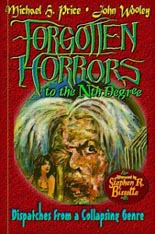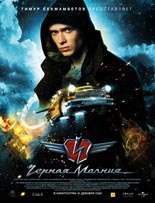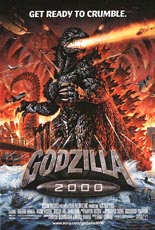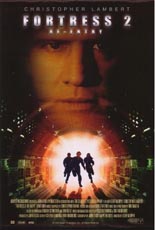
 A sequel to one of only three — maybe four, on the right day — good movies starring Christopher Lambert (and no, Highlander isn’t one of them), Fortress 2: Re-Entry really should be called Fortress 2: Re-Exit, right? After all, it’s the escape that’s the thing.
A sequel to one of only three — maybe four, on the right day — good movies starring Christopher Lambert (and no, Highlander isn’t one of them), Fortress 2: Re-Entry really should be called Fortress 2: Re-Exit, right? After all, it’s the escape that’s the thing.
In the near future, giving birth is still a felony punishable by life sentences. John Henry Brennick (Lambert), having survived the first film, is now reunited with his family and living in the wilderness … until the bad guys find and arrest him.
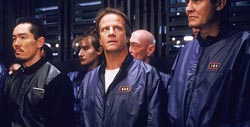 The futuristic prison fortress he’s taken to, however, looks totally unlike the sleek, state-of-the-art facility of the 1992 movie, presumably due to a low budget. Similarly, this sequel retains only a fraction of the original’s cleverness and wit — a trade-off I’d expect when you go from a director like Re-Animator’s Stuart Gordon to Geoff Murphy, the guy who helmed Young Guns II. Her Jackie Brown comeback apparently already over, Pam Grier has a senseless supporting role as the corporate owner of the prison.
The futuristic prison fortress he’s taken to, however, looks totally unlike the sleek, state-of-the-art facility of the 1992 movie, presumably due to a low budget. Similarly, this sequel retains only a fraction of the original’s cleverness and wit — a trade-off I’d expect when you go from a director like Re-Animator’s Stuart Gordon to Geoff Murphy, the guy who helmed Young Guns II. Her Jackie Brown comeback apparently already over, Pam Grier has a senseless supporting role as the corporate owner of the prison.
The third act may be silly and convoluted, but there’s some decent airlock action, camera-equipped cockroaches and numerous shower scenes to compensate. Lambert hams it up as usual, although his voice hardly raises above a whisper. “Why’s he talk like that?” my wife asked.
“Because he’s French and he’s not a good actor,” I answered. I mean, the guy may have a grasp on the English language, but his palms are still greased with Vaseline. —Rod Lott

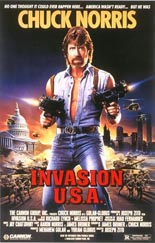
 Twelve True Facts about
Twelve True Facts about 

